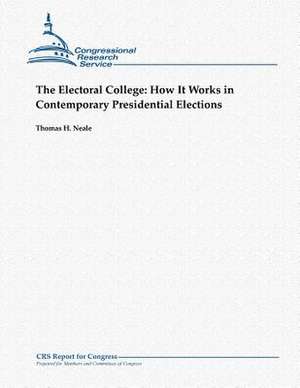The Electoral College
Autor Thomas H. Nealeen Limba Engleză Paperback
Preț: 93.02 lei
Nou
Puncte Express: 140
Preț estimativ în valută:
17.80€ • 18.63$ • 14.73£
17.80€ • 18.63$ • 14.73£
Carte disponibilă
Livrare economică 15-29 martie
Preluare comenzi: 021 569.72.76
Specificații
ISBN-13: 9781481063708
ISBN-10: 1481063707
Pagini: 28
Dimensiuni: 216 x 279 x 2 mm
Greutate: 0.09 kg
Editura: CREATESPACE
ISBN-10: 1481063707
Pagini: 28
Dimensiuni: 216 x 279 x 2 mm
Greutate: 0.09 kg
Editura: CREATESPACE
